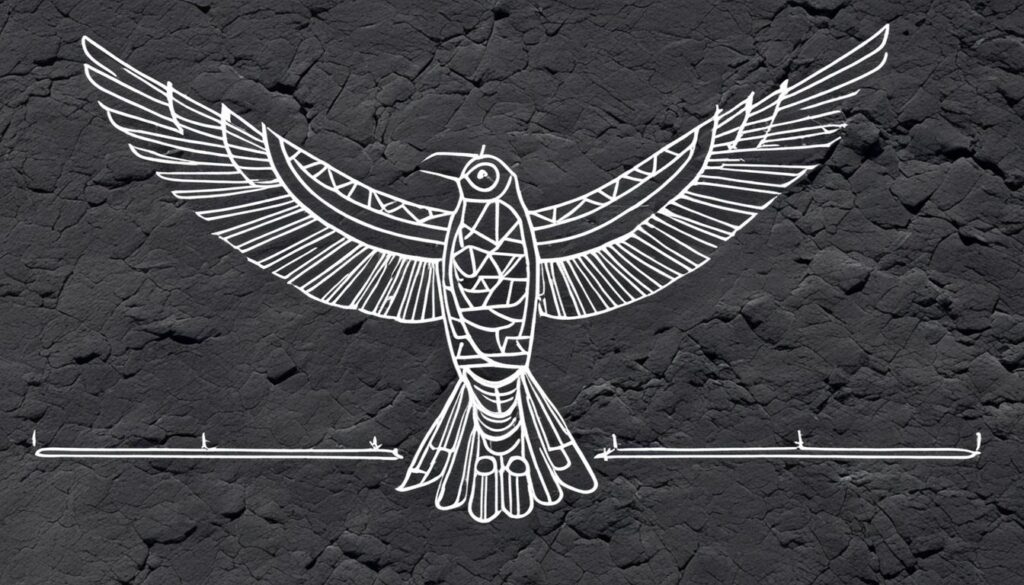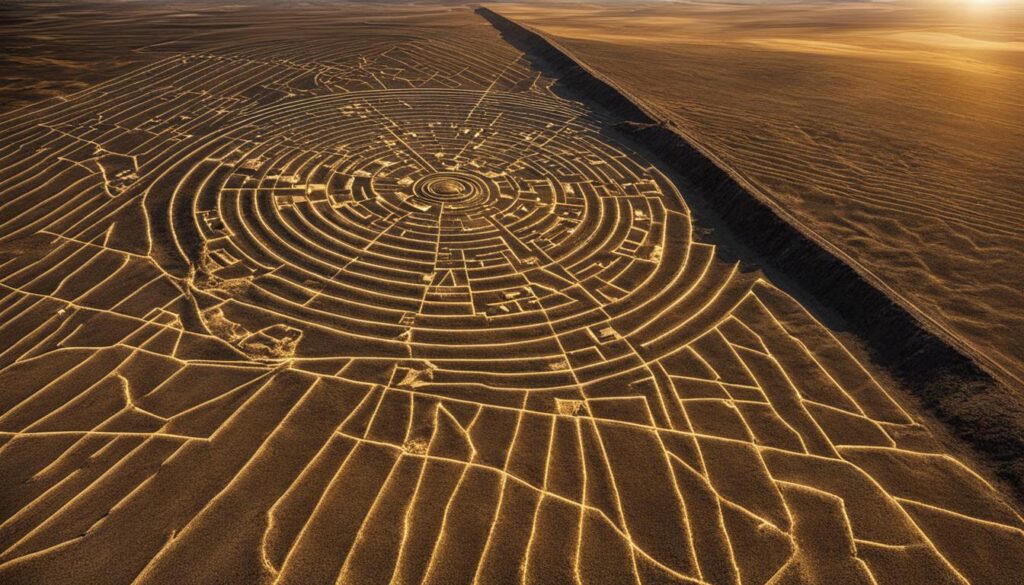The Nazca Lines Mystery is one of the world’s most fascinating enigmas, featuring Peru’s prehistoric art created by the Nazca civilization. These ancient geoglyphs, consisting of enormous figures etched in the desert ground, have intrigued scholars, researchers, and tourists alike for decades.
Despite extensive studies and research, the origin, purpose, and symbolic significance behind these remarkable Nazca Lines remain a mystery, filled with numerous unexplained theories and speculations.
In section 2, we will delve into the history and significance of the Nazca Lines, offering a glimpse into the past and uncovering the mysteries of this fascinating ancient Nazca culture.
Exploring the Nazca Lines: A Glimpse into the Past
The Nazca Lines, ancient geoglyphs etched into the desert plains of southern Peru, remain one of the most enduring mysteries of the ancient world. These massive figures, which include animals, geometric shapes, and human-like forms, can only be fully appreciated from a high altitude. Discovered by Peruvian archaeologist Toribio Mejia Xesspe in 1927, the Nazca Lines have captivated researchers and visitors ever since.
Ancient Nazca culture, which flourished between 200 BCE and 600 CE, created these geoglyphs through a meticulous process of removing dark pebbles and revealing the white earth beneath. Known for their advanced irrigation systems and textiles, the Nazca civilization left behind a rich artistic legacy that included these intricate designs.

The creation of the Nazca Lines is shrouded in mystery, with no consensus regarding their purpose. Some scholars argue that the geoglyphs were part of an elaborate religious ritual, while others believe they served as astronomical calendars or even landing strips for extraterrestrial beings. Despite the numerous theories, the true purpose of these ancient artworks remains a subject of much debate.
Uncovering Nazca mysteries requires an understanding of the cultural context in which these geoglyphs were created. Through continued research and exploration, we can gain a deeper insight into the fascinating symbolism and astronomical alignments of these ancient geoglyphs, and the enduring legacy of the Nazca civilization.
The Fascinating Symbolism of the Nazca Lines
The Nazca Lines are not just impressive geoglyphs etched into the Peruvian desert – they also hold significant symbolic meaning. Scholars speculate that the various animals, plants, and geometric shapes represented in the Nazca Lines may have served as sacred symbols or markers for pilgrimage routes.
For instance, the spider may have symbolized the underworld, while the hummingbird represented the sky. The figure of a man, also known as the “astronaut,” is thought to have been an important religious figure or shaman, possibly connected to shapeshifting and transformation.

Each symbol’s significance may have differed depending on its location and context within the Nazca Lines, reflecting the beliefs and values of the Nazca civilization. By studying these symbols, we can gain insight into how this ancient culture understood the world and their place within it.
Astronomical Alignments: Unveiling the Celestial Connection
The Nazca Lines’ intricate designs and patterns served more than just artistic purposes, as they were also closely tied to celestial events. Many researchers have studied the astronomical alignments observed in the Nazca Lines, positing various theories as to their significance.
One theory suggests that the Nazca civilization used the lines to mark solstices and equinoxes, as several of the geoglyphs align with the winter solstice sun and the positions of several star constellations.
Others believe that the Nazca Lines were used as part of an ancient astronomical calendar, to predict celestial events like eclipses and seasonal changes.

These astronomical alignments provide a glimpse into the incredible knowledge and advanced understanding of celestial phenomena possessed by the ancient Nazca culture.
By studying the astronomical alignments present in the Nazca Lines, we can gain deeper insights into the culture and beliefs of this ancient civilization, and the remarkable feats of engineering required to create these geoglyphs.
Conclusion
Exploring the Nazca Lines Mystery has provided a fascinating glimpse into Peru’s prehistoric art and the enduring allure of this ancient civilization’s remarkable artistic legacy. From uncovering Nazca mysteries to shedding light on the cultural and spiritual significance of ancient geoglyphs, the Nazca Lines have continued to captivate and intrigue people for centuries.
Perhaps the most intriguing aspect of the Nazca Lines lies in the astronomical alignments observed in these ancient artworks. The possible connections between these geoglyphs and celestial events have sparked intriguing theories about the motives and beliefs of the Nazca civilization.
As research into Peru’s prehistoric art and the Nazca Lines continues, it is clear that this ancient enigma will continue to inspire and challenge us for years to come. The enduring fascination with this remarkable achievement of human creativity underscores the profound impact that the Nazca civilization has had on our shared cultural heritage.
In conclusion, the Nazca Lines Mystery remains a compelling testament to the incredible ingenuity and artistic talent of the ancient world. Through continued exploration and investigation, we can hope to unlock even more of the secrets of Peru’s prehistoric art and gain a deeper appreciation for the enduring legacy of the Nazca civilization.
